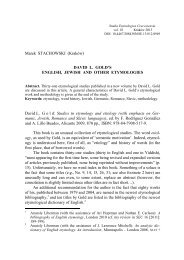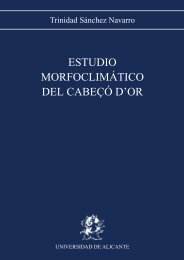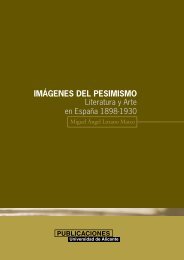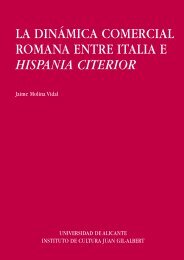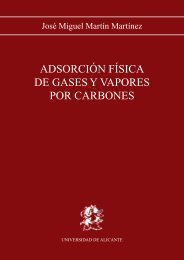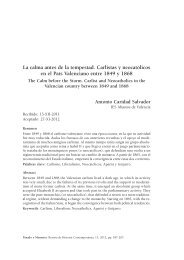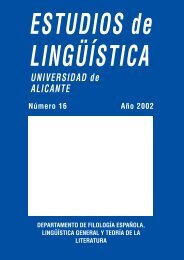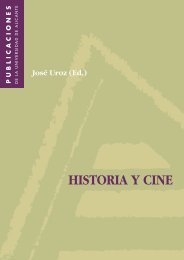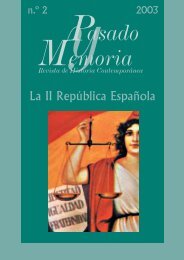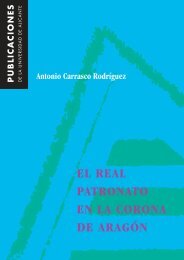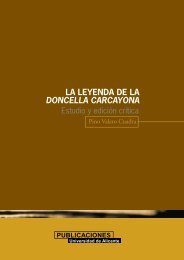English and Galician in the Middle Ages - Publicaciones ...
English and Galician in the Middle Ages - Publicaciones ...
English and Galician in the Middle Ages - Publicaciones ...
Create successful ePaper yourself
Turn your PDF publications into a flip-book with our unique Google optimized e-Paper software.
<strong>English</strong> <strong>and</strong> <strong>Galician</strong> <strong>in</strong> <strong>the</strong> <strong>Middle</strong> <strong>Ages</strong>:<br />
A Sociohistorical Survey<br />
Begoña Crespo García<br />
He also establishes a subdivision po<strong>in</strong>t<strong>in</strong>g to three types of<br />
diglossia:<br />
1. “Classic diglossia”: <strong>the</strong> one referred to by Ferguson. It <strong>in</strong>volves<br />
divergent dialects.<br />
2. “Superposed bil<strong>in</strong>gualism”: <strong>the</strong> languages <strong>in</strong>volved are not<br />
very closely related.<br />
3. “Style-shift<strong>in</strong>g”: it deals with stylistic differences. There is a<br />
close connection between <strong>the</strong> codes <strong>in</strong> contact.<br />
Fasold seems to <strong>in</strong>clude languages with a different degree<br />
of l<strong>in</strong>guistic relatedness <strong>in</strong> his defi nition. That is <strong>the</strong> reason<br />
why when apply<strong>in</strong>g his subdivision to <strong>English</strong> <strong>and</strong> <strong>Galician</strong> we<br />
come across two different situations: when Norman French<br />
<strong>in</strong>vaded <strong>the</strong> power circles of <strong>English</strong> life <strong>the</strong> relation between<br />
<strong>the</strong>se two languages was comparatively distant. Old <strong>English</strong><br />
descended from a West-Germanic branch of <strong>the</strong> Indo-European<br />
family whereas Old French was of Italic orig<strong>in</strong>. Their<br />
only po<strong>in</strong>t of convergence was <strong>the</strong> footpr<strong>in</strong>ts left by <strong>the</strong> b<strong>and</strong>s<br />
of Northmen (9 th /10 th centuries) that had settled <strong>in</strong> both countries:<br />
<strong>in</strong> <strong>the</strong> North <strong>and</strong> East of Engl<strong>and</strong> <strong>and</strong> <strong>in</strong> Norm<strong>and</strong>y (Fennell,<br />
2001). However, <strong>the</strong> fact that Lat<strong>in</strong> was <strong>the</strong> common root<br />
of <strong>Galician</strong> <strong>and</strong> Castilian implies a close connection between<br />
<strong>the</strong> two. The different l<strong>in</strong>guistic substrata <strong>in</strong> <strong>the</strong> pen<strong>in</strong>sula before<br />
<strong>the</strong> com<strong>in</strong>g of <strong>the</strong> Romans <strong>and</strong> <strong>the</strong> circumstances under<br />
CONTENTS<br />
37



